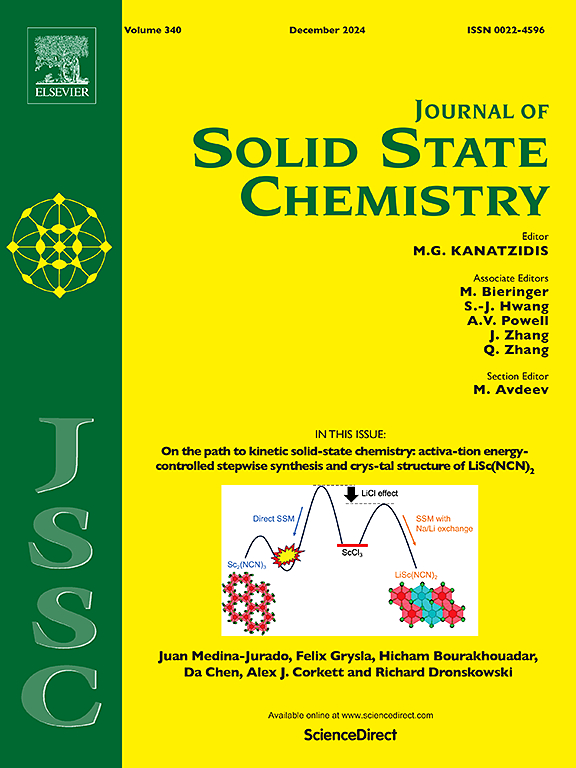Structure and properties of KTi1-xZrxOAsO4 (x=0.025, 0.05, 0.075, 0.1) crystals
IF 3.2
3区 化学
Q2 CHEMISTRY, INORGANIC & NUCLEAR
引用次数: 0
Abstract
A series of single crystals of solid solutions KTi1-xZrxOAsO4 (x = 0.025, 0.05, 0.075, 0.1) have been grown by the Czochralski method. The structural analysis of this series of samples showed that at titanium partial substitution (0.025 ≤ x ≤ 0.1) Zr4+ occupies the T1 position of the Ti1O6 octahedron, as well as the T2 position of the Ti2O6 octahedron, at the same time the volume of octahedra increases. But at 0.05 ≤ x ≤ 0.1 the volume of the Ti1O6 octahedron stops growing, and only the volume of Ti2O6 increases, consequently, at x = 0.05 Zr saturation is observed at position Ti1. The Raman spectrum of a pure KTA crystal is very different from the spectra of the entire range of solid solutions. In the transmission spectrum of samples with partial substitution of titanium atoms by zirconium atoms, there is practically no wide absorption band at 3.5–4 μm typical for pure KTA, the maximum crystal transparency in this region is achieved for x = 0.075. It was found that the introduction of large Zr ions into the KTiOAsO4 structure leads to a distortion of the lattice and an increase of the band gap.

求助全文
约1分钟内获得全文
求助全文
来源期刊

Journal of Solid State Chemistry
化学-无机化学与核化学
CiteScore
6.00
自引率
9.10%
发文量
848
审稿时长
25 days
期刊介绍:
Covering major developments in the field of solid state chemistry and related areas such as ceramics and amorphous materials, the Journal of Solid State Chemistry features studies of chemical, structural, thermodynamic, electronic, magnetic, and optical properties and processes in solids.
 求助内容:
求助内容: 应助结果提醒方式:
应助结果提醒方式:


